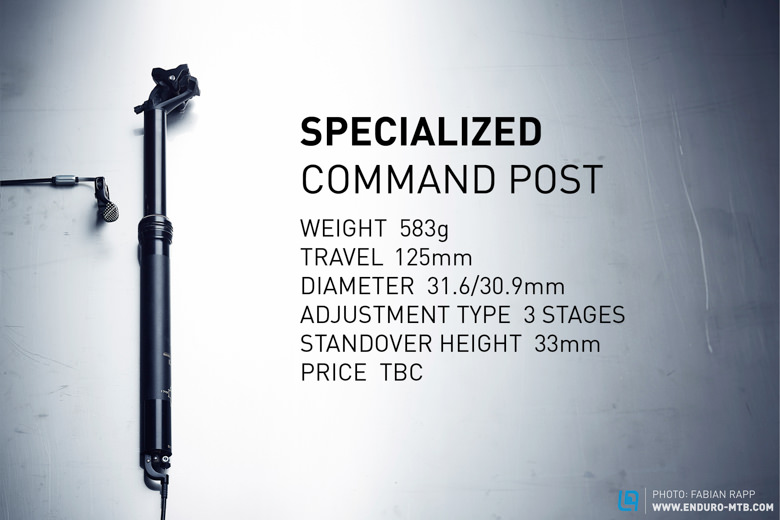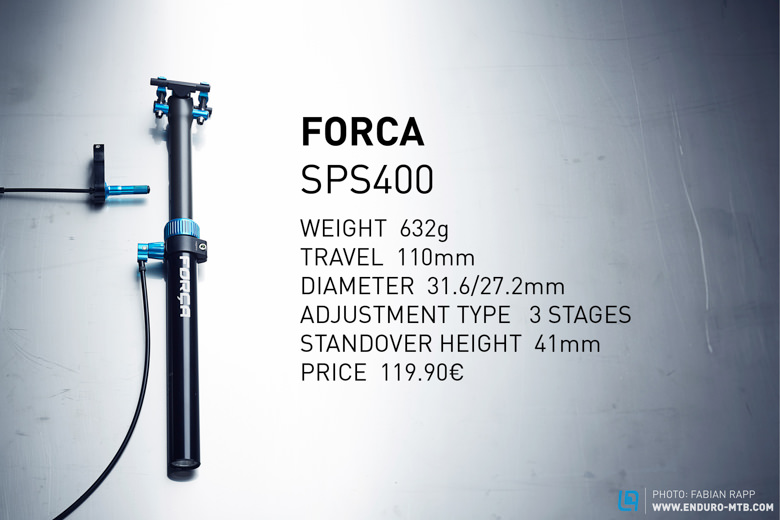Review: 8 Dropper Seatposts selected for testing

During the past years, dropper seatposts have revolutionized our riding, progressing from a luxury item for those with too much money, to a must-have item for every trail bike.
Update May 2016: Check out our updated dropper post group test: The best dropper seatpost you can buy
Whether you are out for a comfy evening ride or fighting for a podium position – a seatpost that can be adjusted via the handlebar improves not only safety, but also control and comfort. The range of dropper seatposts has grown immensely, catering to most budgets. ENDURO invited eight of the most interesting posts for testing! The selection includes posts ranging from 120 up to 400 Euros, and features diverse technologies such as stealth models and internal and external cable actuation. The test revealed great variation, not only in price and weight, but most of all in performance. Keep reading to learn more about the differences and to find out which seatposts impressed our testers.

Standover height:
Due to a dropper post’s construction and mechanism, the saddle’s lowest possible position is always slightly higher than a conventional seatpost. The standover height is the minimum distance that the post requires above the top of the frame’s seat tube. For those who like the saddle extremely low on downhill sections, look for a post with a low standover height – if you don’t slam your seat right down to the frame, a higher standover should not bother you. The post with the lowest standover height was the Thomson, while the Crankbrothers Kronolog was the highest, requiring almost 60 mm.
Remote lever:
An ergonomic handlebar lever is essential to be able to make full use of a dropper seatpost’s advantages: it should be easy to reach and be easily controllable. In addition, it should be compact – after all, it has to share limited handlebar space with brake levers, shifters, and occasionally fork/shock remotes! When it comes to ergonomics and function, the RockShox Reverb leads the way with hydraulic control, extremely smooth handling, and a compact lever.
Travel:
The travel defines the difference between the highest and lowest adjustments of the saddle position. Depending on the size of frame and rider, most enduro riders use between 100 mm and 150 mm. If you are a short rider or have a tall frame, ensure that you choose the correct length travel: longer is not always better! If you choose a post with too much travel for your height or frame, the seat will be too high at maximum extension. We found that some 150 mm travel posts were simply too long for some of our testers.
Total length:
Special attention should be paid to the total length of the post for use in small frames, or those with kinked seat tubes. Take some measurements if choosing internal cable routing, as some cables need to go pretty deep into the frame, causing fitment issues if the seatpost is too long.
Cable routing:
There are three cable routing options represented in this test: models that use internal cable routing inside the seat tube (Specialized, RockShox) offer a clean








You can read an in-depth feature about the group test and our conclusions in the actual ENDURO issue #008! As usual it’s free & only digital for iPad, Android-Tablets and Online-Viewer: Issue #008.
Update May 2016: Check out our updated dropper post group test: The best dropper seatpost you can buy
Text: Aaron Steinke Pictures: Fabian Rapp
Did you enjoy this article? If so, we would be stoked if you decide to support us with a monthly contribution. By becoming a supporter of ENDURO, you will help secure a sustainable future for high-quality mountain bike journalism. Click here to learn more.








